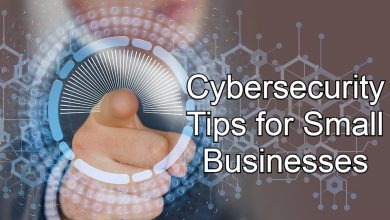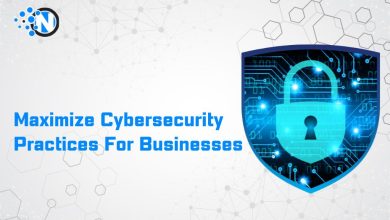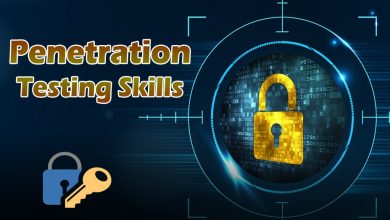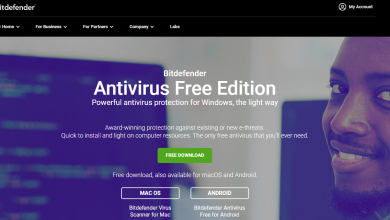Why A Unified Cybersecurity Platform is the Future of Digital Protection

Cyber threats are growing in number and style every year. Hackers are getting smarter, and the ways they try to steal data or damage systems keep changing. Many companies still use many separate security tools to protect their networks, but these tools often work alone and don’t share any kind of information. This creates gaps where attacks can slip through.
An Enterprise cybersecurity platform brings all these tools together into one place so they can work as a team. This makes it easier to spot problems quickly and stop them before they cause harm.
In this blog post, I will explain why having one unified cybersecurity system is the best way forward for keeping data and systems safe.
Why You Need a Unified Cybersecurity Platform
Expanding And Changing Cyber Threats Need One Strong Defense
Cyber attacks come in many forms today, from phishing emails to ransomware to advanced viruses. Once, it was enough to have just a firewall or antivirus software. Now, attacks can target phones, cloud services, websites, and devices all at the same time. If every part of a system has separate protection that does not talk to the others, attackers can get away easily.
With one strong enterprise cybersecurity platform, every corner of the network is watched together. This means if a threat appears in one place, the system can quickly respond in all connected areas. A united approach helps keep up with the speed and variety of threats in the modern world.

Using Too Many Security Tools Makes Protection Difficult
Many businesses use several security products from different companies. While each tool might work well on its own, they are not always built to work together. This can mean lots of dashboards to check, many alerts to review, and more time spent switching between systems.
Important warning signs can get missed in the mix. A unified platform brings these tools together, giving one clear view of all activity. This reduces confusion and makes it simpler to understand what is happening. Instead of wasting effort on juggling tools, the team can focus directly on stopping threats.
Better View Of All Digital Assets For Faster Threat Detection
Every company has many assets to protect like computers, servers, cloud accounts, and mobile devices. If each one is monitored separately, it takes longer to notice when something strange is happening. A unified platform gives a single dashboard that shows everything in one place.
If malware appears on a device or a hacker tries to enter a system, it is spotted fast. This is possible because activity across all devices is tracked together. The result is better visibility and faster action, which can prevent small issues from turning into big, costly problems.
Quicker Response To Threats With Integrated Incident Management
When a cyber threat is found, every second matters. In a setup where security tools are separate, the process of response can be slow. The team must collect details from different places and figure out the whole picture before acting.
With an integrated system, response steps can start immediately because all the needed information is already connected. The platform can even begin basic actions automatically, like blocking harmful traffic or isolating infected devices. This reduces the time a threat has to cause damage.
Save Costs And Work Better By Combining Security Tools
Buying and managing multiple separate tools can be expensive. Each product needs its own license, updates, and training for staff to use it. Over time, these costs add up. A unified platform usually means one main system to buy, set up, and learn.
While it might still use different security features, they are all managed together. This saves money and time. Fewer systems also mean less pressure on the IT and security teams, allowing them to focus on other important tasks.
Reduce Human Errors And Alert Overload
When a security team receives too many alerts from different systems, this can lead to alert fatigue. What this means is they become less alert or even miss real dangers. With a centralized platform, alerts are combined, filtered, and sorted by priority.
This way, the team sees the most urgent issues first. The platform also reduces the chance of mistakes, since all the information about a threat is shown in one easy-to-read place. Fewer errors mean better overall protection.
Use AI And Automation For Early Threat Prevention
A unified cybersecurity platform can use smart technology like AI and automation to watch for patterns that might point to an attack. It can learn from past threats and try to spot signs before harm is done. For example, if it sees unusual network traffic or log-in attempts from unknown places, it can send an alert or block the activity quickly. Automation can also handle simple fixes, so the team can focus on complex cases. This early prevention helps keep systems safer without constant manual work.
Make IT And Security Teams Work Together For Better Protection
When security tools are separate, IT staff and security teams can end up working in isolation. With a shared platform, they have the same information and can easily communicate about risks. This improves teamwork, helps solve problems faster, and avoids repeating work. Clear, shared data means both teams understand the threats and can decide together on the best way to handle them. This joined effort strengthens the overall protection of the company.
Easy To Grow Security Across Cloud And Hybrid Systems
Many companies today use a mix of on-site systems, cloud services, and even hybrid setups. Protecting all of these with separate tools can be difficult. A unified cybersecurity platform can cover all areas under one system, no matter where the data or apps are stored. This makes it easier to extend security as the business grows, moves into new cloud services, or adds more devices. The same level of protection can be kept everywhere without constant tool changes.
Stronger Rules And Compliance With Unified Policies
The storing and protection of data are subject to regulations imposed within industries and by governments. Such rules may be difficult to comply with when different tools are applied to different sections of the system. A common platform gives the security policy to be established and enforced on the entire territory simultaneously. This simplifies being in touch with laws and standards. In case of change, a single instance can be used to implement the change and it does not have gaps in compliance.
Summing Up
Cybersecurity threats in the enterprise will continue to evolve and multiple tools being used will continue to pose problems. Unified cybersecurity platform consolidates all defense, enabling them to be quicker, easier, and more powerful. It provides enhanced oversight, improved reaction speed, price reductions, fewer errors and improved collaboration among technical teams.
It simplifies the process of compliance and evolving along with the growth of the company, as well. With protection integrated into a single system, organizations can be one step ahead of the attackers and ensure that their data, devices, and networks are increasingly secure.




